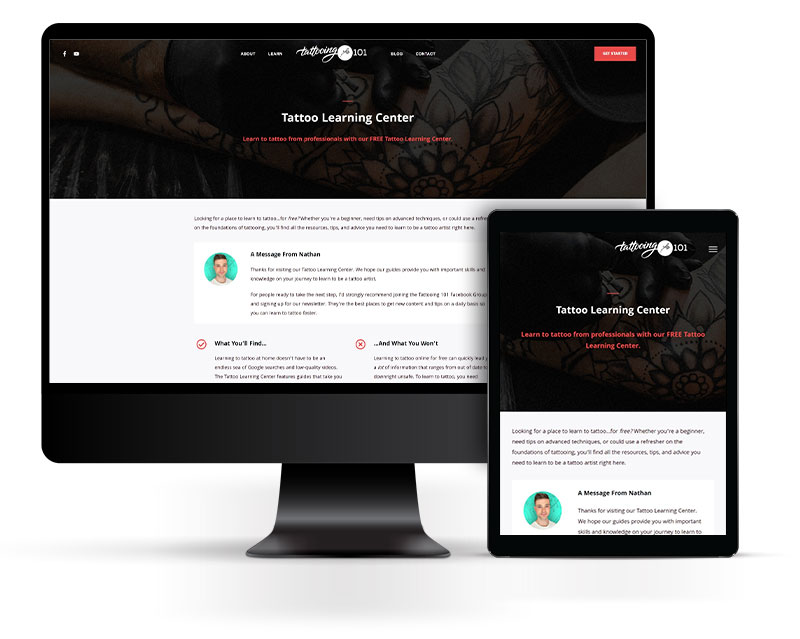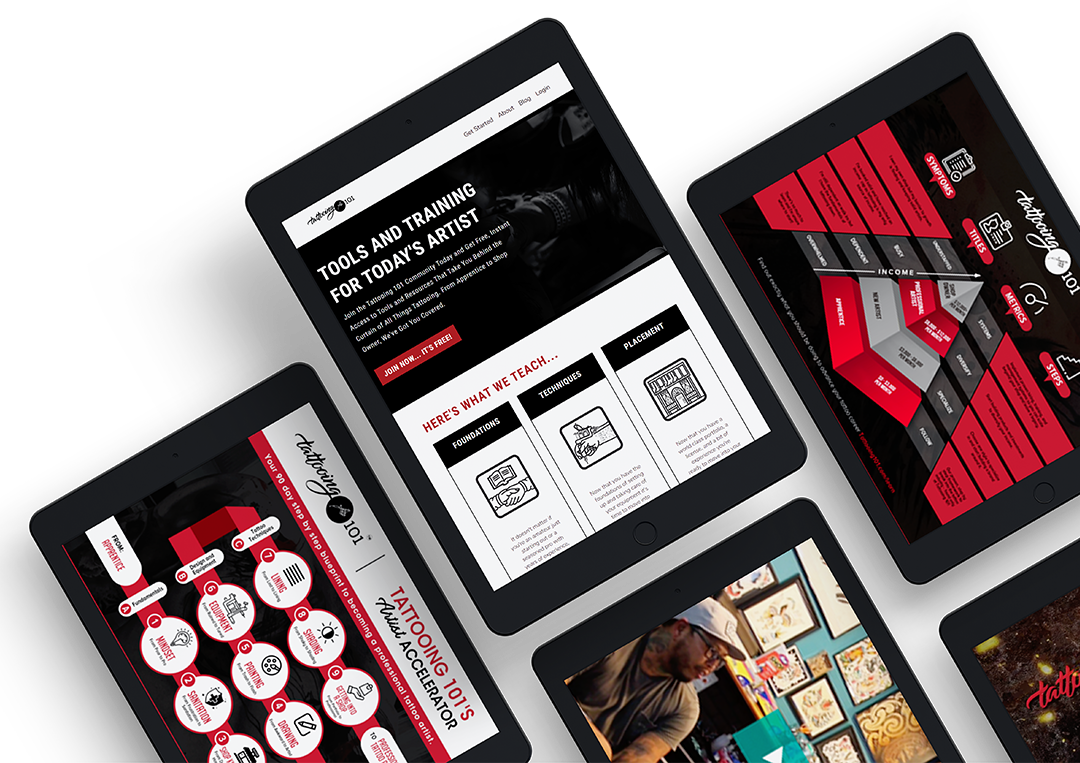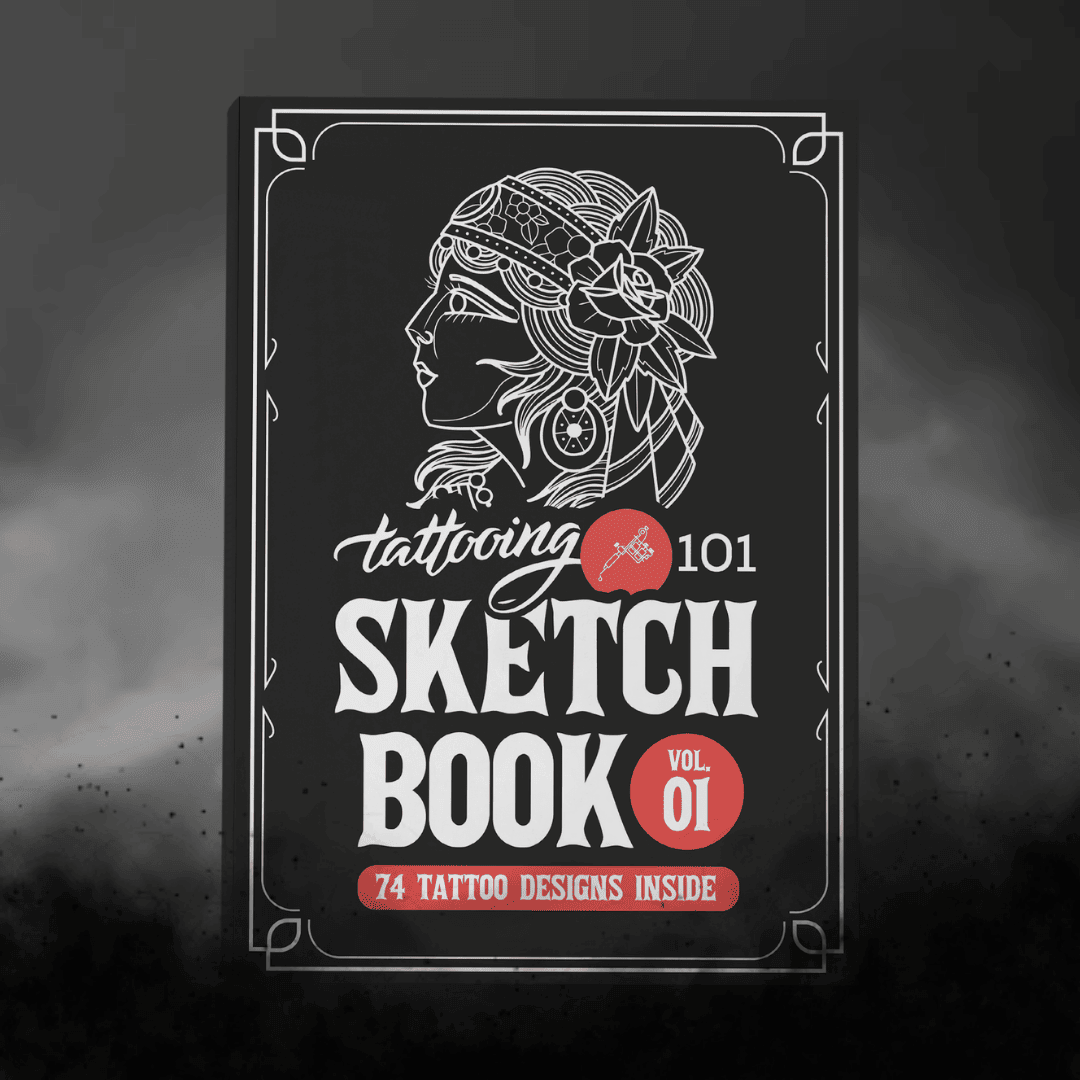A flash tattoo is a pre-made design that can usually be tattooed in one sitting. Flash designs are typically displayed on the walls of tattoo shops or in flash books on 11” x 14” pieces of paper.
As a tattoo artist, flash designs help you in two ways:
If you’re not sure how to get started with flash, this article will break down:
What Are the Different Types of Flash Tattoos?
There are a few different types of flash tattoos. As a tattoo artist, you’ll need to know the difference:
1
Market Flash Tattoos
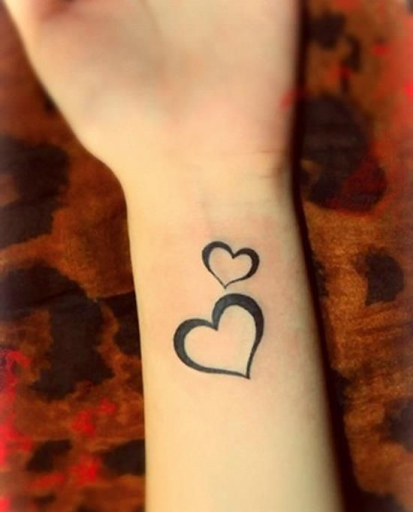
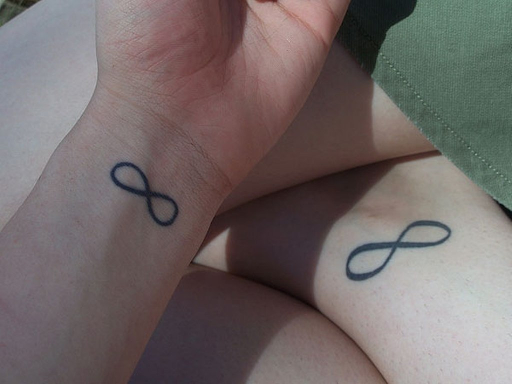
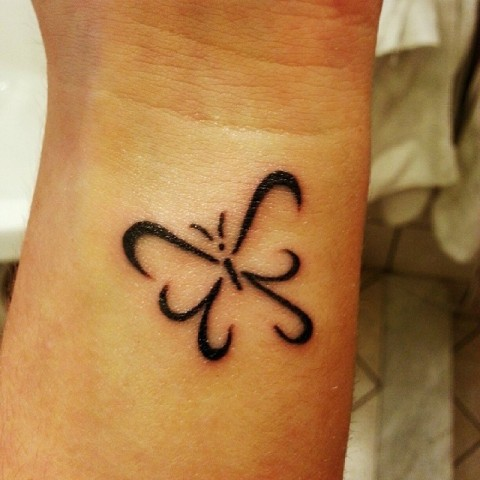
“Market flash” refers to popular tattoo designs that you can get in any street shop. Market flash designs include hearts, roses, infinity signs, and more. Because they are used over and over again, multiple clients might end up with the same tattoo.
2
Collector Flash Tattoos
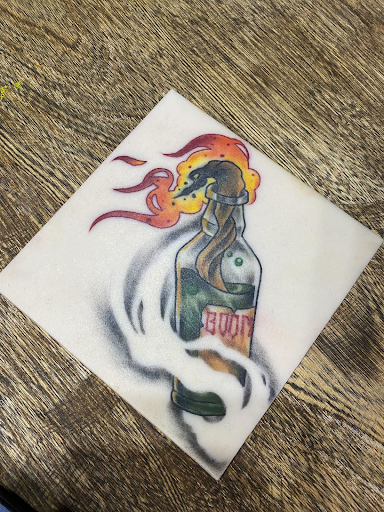
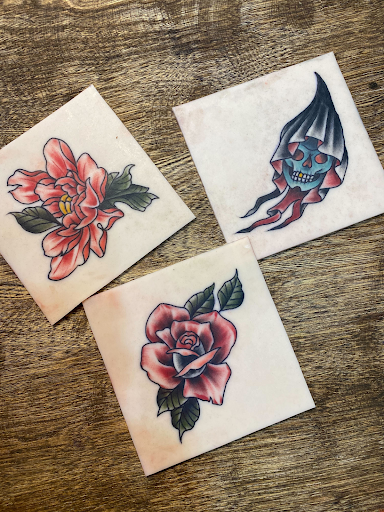
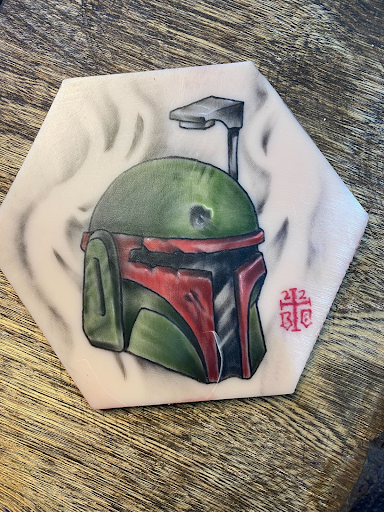
*These designs were created by Tattooing 101 Instructor Brandon
A collector flash tattoo is created by a specific artist. A tattoo artist will have flash they created in their portfolio, and they’ll be the only artist who tattoos that specific flash design. (This does not mean the client will be the only person with that tattoo.)
3
Traditional Flash Tattoos

If you hear people talking about “traditional tattoo flash,” they’re talking about American traditional designs, or even designs that copy Sailor Jerry’s style. These are classic designs that don’t go out of style; they use bold lines and a limited color palette.
Why Is Flash Important?
Other than the fact that many clients want flash tattoos, flash is important to tattoo artists for three reasons:
1
Flash is a Big Part of Tattoo Culture.
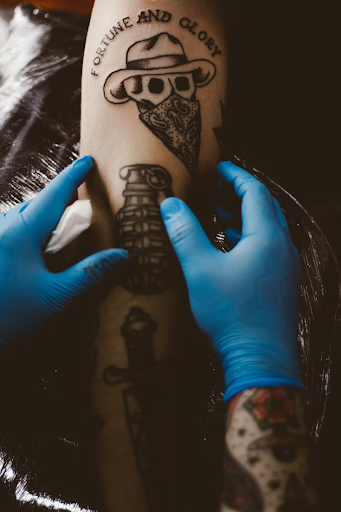
Back when tattooing was illegal, tattoo artists would set up shop in hidden areas (like the back of a bar). They’d open up a briefcase and tape up a piece of paper or cardboard full of designs they could do quickly. This let the artist tattoo several clients in one night.
If the cops showed up, the artist would close up their designs in the briefcase and disappear “in a flash.”
Nowadays, flash tattoos have become a major part of the industry. For example, artists who have mastered the style sell their designs (and the rights to use them) to studios or individual artists at tattoo conventions. Additionally, studios will host “flash days” where their artists tattoo small flash designs to draw in customers.
2
You Can Use Flash to Make Custom Tattoos.
Flash is usually most helpful when a client comes in and they don’t know what they want to get tattooed. Showing them a book of flash tattoos lets them get a look at your work and get ideas. Even if they want a custom tattoo, you can use one or more flash designs as a base to work from.
Here’s how to adapt flash designs and turn them into custom tattoos:
3
Flash is the Best Way to for New Artists to Practice Tattooing
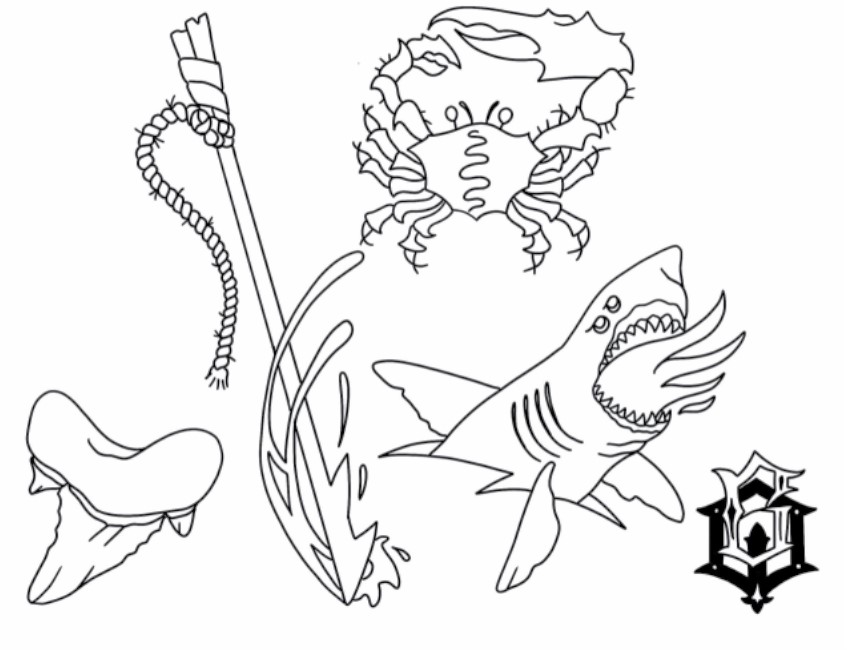
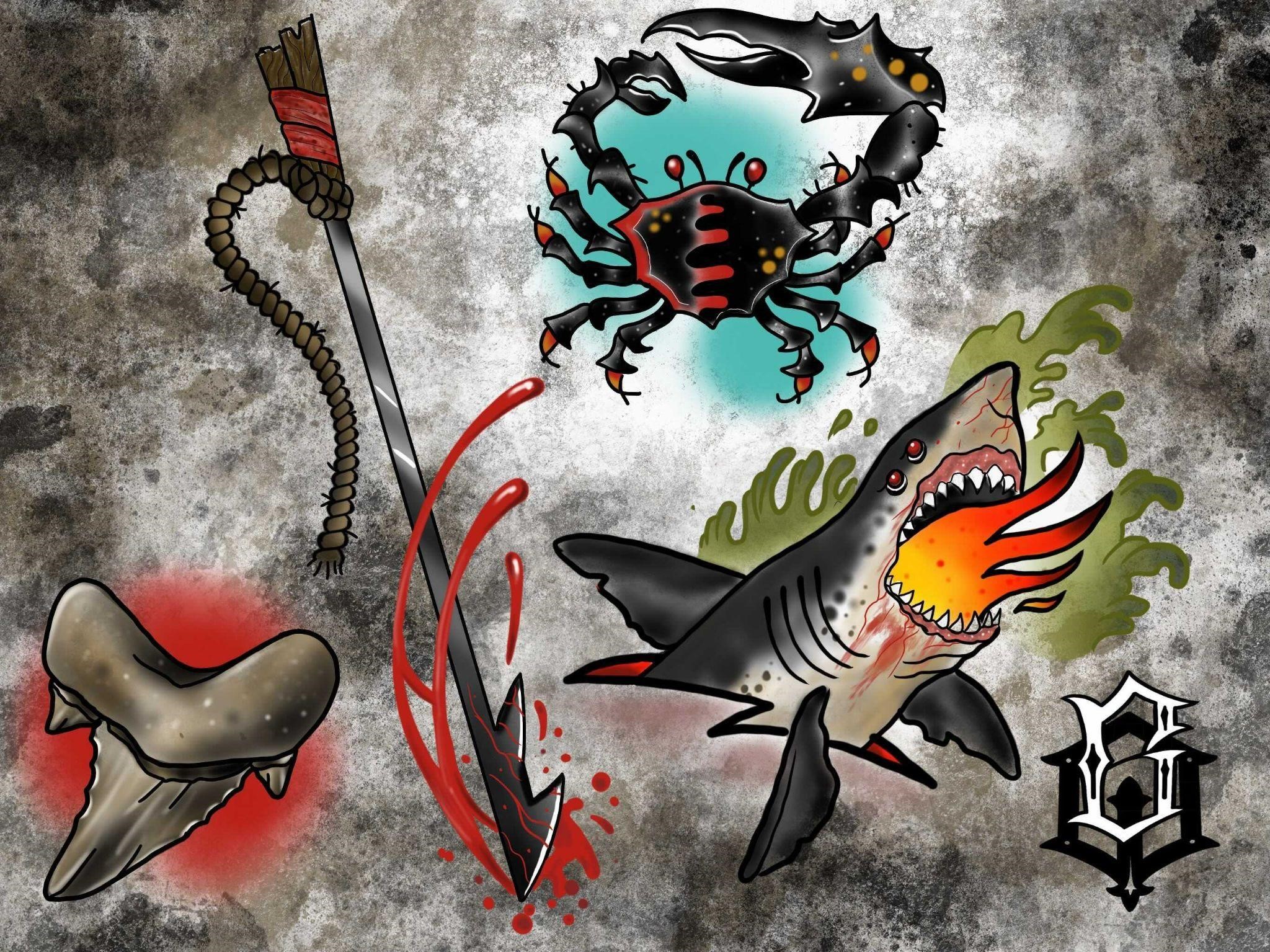
*A flash sheet usually consists of 2 pieces of paper. One completed sheet in color, and one sheet with just the outlines to make a quick stencil.
As tattoos have become more popular, more people have started getting custom tattoos. However, this doesn’t mean you should skip over flash.
As a new tattoo artist, creating your own flash lets you practice on small designs, which is what you’ll be doing for the first year of your career.
Additionally, if you’re still learning basic tattooing techniques, we recommend tattooing flash to learn faster. This will let you get through a whole tattoo in one sitting, take the lessons you learn, and improve on the next one. (Doing one tattoo that takes three days slows down your speed of learning and improving.)
Flash Ideas and Free Tattoo Flash Designs
Whether you want to practice tattooing or develop your drawing skills, working with designs created by other artists can help you improve your art until you’re comfortable creating your own work from scratch.
Below, you’ll find flash designs, starting with easy linework tattoos and moving toward more advanced, larger-scale work.
Note:
Do not use another artist’s designs in your portfolio. You should only use another artist’s work for practice.
1
Free Easy Tattoo Designs
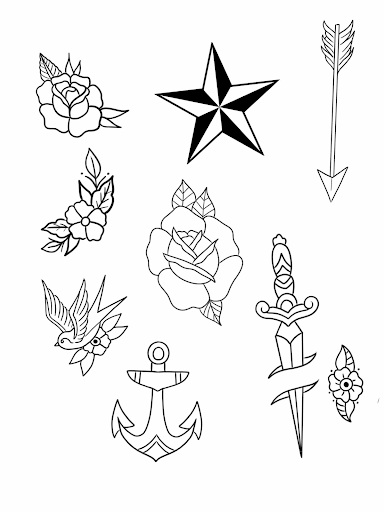
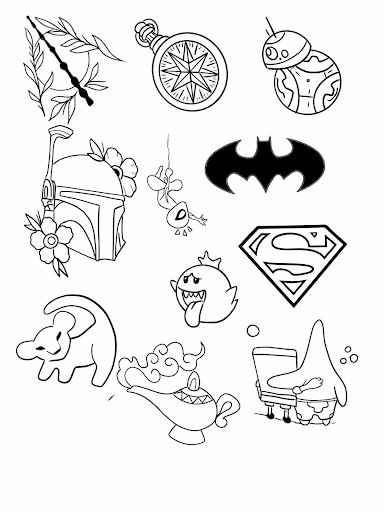
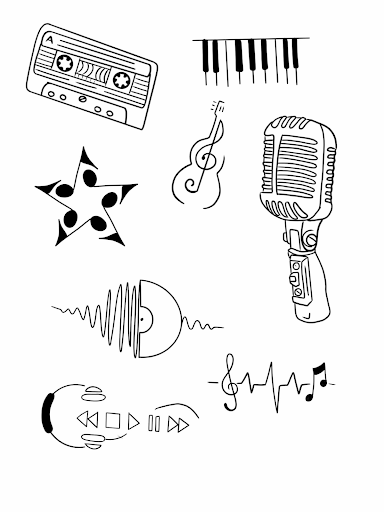
2
Intermediate Tattoo Designs
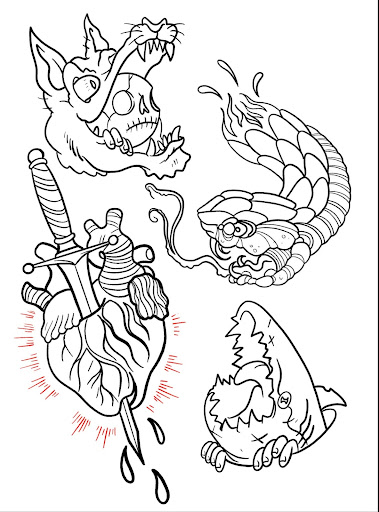
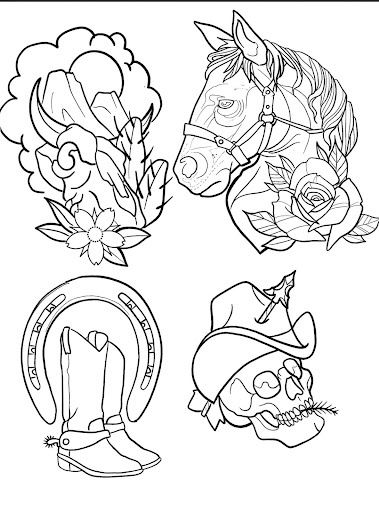
Flash tattoos tend to be smaller and simpler than large, custom pieces. However, you can still use dimension and line weights to give your designs depth in more advanced designs.
3
Take Your Designs to the Next Level
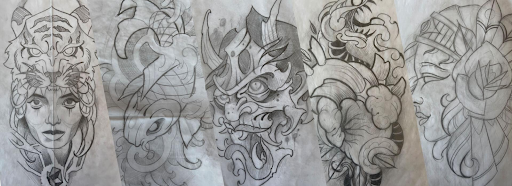
As a new tattoo artist, simple tattoos (like the flash designs in this article) are the best place to start to build your skills. However, as you move forward, you’ll need to be able to design larger, more intricate tattoos for your clients.
To do that, you’ll need to know how to draw with the flow of the muscles - and make sure your designs fit on the body without it wrapping too far around and overlapping. Without the right fit and flow, your tattoos will look awkward and limit your earning potential as a tattoo artist.
However, learning to draw with flow takes most artists years of trial and error…
And it can be really hard to wrap your head around when you’re just starting out. The best way to get the hang of it fast is to look at references of other artists’ work and see how they did it so you can replicate it in your own work.
As you practice drawing and tattooing those professional designs, you’ll naturally learn how to create designs that have flow.
That’s why we created the Tattooing 101 Sketch Book.
Inside, you’ll find 74 tattoo designs drawn for you by our professional tattoo artists. You can use them to inspire your own designs - or you can stencil them up and start tattooing right away.
Instead of hoping another tattoo artist doesn’t see that you’re practicing with their designs, you can rest assured that these are 100% for you to use however you like.
When you draw the designs inside or use as tattoo stencils, you’ll get used to creating designs with flow, which means you’ll be able to draw tattoos that always look good on the body. If you would like to get your hands on a digital copy of 74 pro designs, hit the link below:

